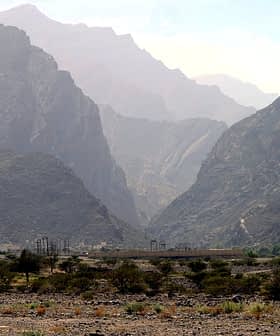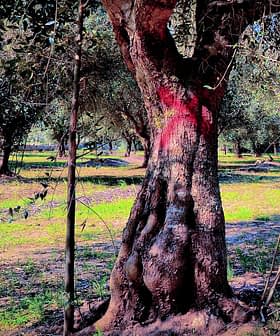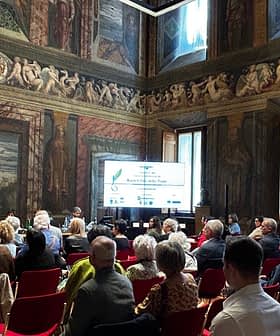Farmers on Small Italian Islands Restore Ancient Groves and Local Production
Growers on Giglio Island and Capri are restoring centuries-old olive trees to revive a fading culture and protect unique island landscapes.
 Carlo Alessandro Lelj Garolla, coordinator of Oro di Capri in an olive grove in Anacapri (Photo: Umberto D'Aniello)
Carlo Alessandro Lelj Garolla, coordinator of Oro di Capri in an olive grove in Anacapri (Photo: Umberto D'Aniello) Italy’s small Mediterranean islands are treasure troves of natural and cultural wonders. Some, now known as popular holiday destinations, were once settled by peasants who practiced subsistence agriculture. Until the second half of the 20th century, it was common to find expanses of cultivated olive groves and active olive presses on most inhabited islets.
L’Oro di Capri created a bond that unites the production of high-quality extra virgin olive oil with the safeguarding of the region and the active participation of the community.
Yet, when tourism boomed and the local economy changed, they were gradually abandoned. Today, some island farmers in the Tyrrhenian Sea are reviving the cultivation of olive trees and production of extra virgin olive oil with a particular focus on recovering ancient trees and restoring soil and landscape.
“We made the first harvest in 2021,” said Francesco Bancalà, who produces Olio Goffo on Giglio Island in Tuscany.
See Also:Tuscany Announces Funds to Prevent Olive Grove Abandonment“I had been thinking for some years of running a farm with my family, but there was a bit of indecision because we already had another job,” he added. “Eventually, I found great support in my wife Stefania Pellegrini and my cousin Emanuele Bancalà, and with them, I started to restore our almost 300 olive trees.”
One of the seven islands of the Tuscan archipelago, Giglio covers 21 square kilometers and is located nearly 16 kilometers off the region’s southern coast.
Fewer than 1,500 people live year-round on the island, characterized by hilly terrain, steep terraces that slope toward smooth, pale granite cliffs, and a few sandy beaches much sought-after by vacationers during the warmest months.

Emanuele and Francesco Bancalà in the groves of Olio Goffo (Photo by Federico Burgalassi)
“An olive mill has been operating on the island until the mid-1990s,” Bancalà said. “Our ancestors landed on these coasts between 1560 and 1570, and afterward, they were most likely engaged in olive farming.”
“Indeed, today, we are taking care of trees that have been passed down to us from our great-grandfather, who produced olive oil,” he added. “The company’s name is a tribute to him; Goffo is the nickname by which he was known in the village.”
Agriculture, primarily viticulture, has always been vital for the economy of Giglio, which was also home to a pyrite mine that provided work to more than 300 islanders from 1938 to 1962. Then, in the 1960s, tourism started developing and gradually supplanted the other activities – for several years, only some villagers continued cultivating the land.
Over the past two decades, a renewed enthusiasm for farming began to spread on the island. In the early 2000s, some entrepreneurs reintroduced Ansonaco (the local dialect for Ansonica) wine, made from an autochthonous white grape, onto the market.

The producers behind Olio Goffo are working to restore centenarian olive groves. (Photo by Federico Burgalassi)
In 2017, a local cooperative installed a latest-generation olive mill used by local growers to produce olive oil for domestic consumption.
“After having recovered our plots, we started asking fellow villagers if we could manage their lands through a rental agreement,” Bancalà said. “Our work has been highly appreciated, and several owners of olive groves ended up asking us to take care of their trees.”
“Today, this has become an important project for us since most olive trees are centuries old and represent a true heritage,” he added. “At the same time, we preserve the terraces and manage the land sustainably, using only organic fertilizers.”
Usually, the team carries out a drastic reform pruning of the trees to restore their vegetative-productive balance after years of neglect. They take two or three years to become productive again.
“We have cleaned up some plots where the olive trees could not even be seen since they were submerged by vegetation,” Bancalà said. “Moreover, some trees can grow eight meters tall. We prune them all according to the polyconic vase system and make them lower, up to a maximum of three meters. Those reformed a couple of years ago are starting to bear fruit again.”
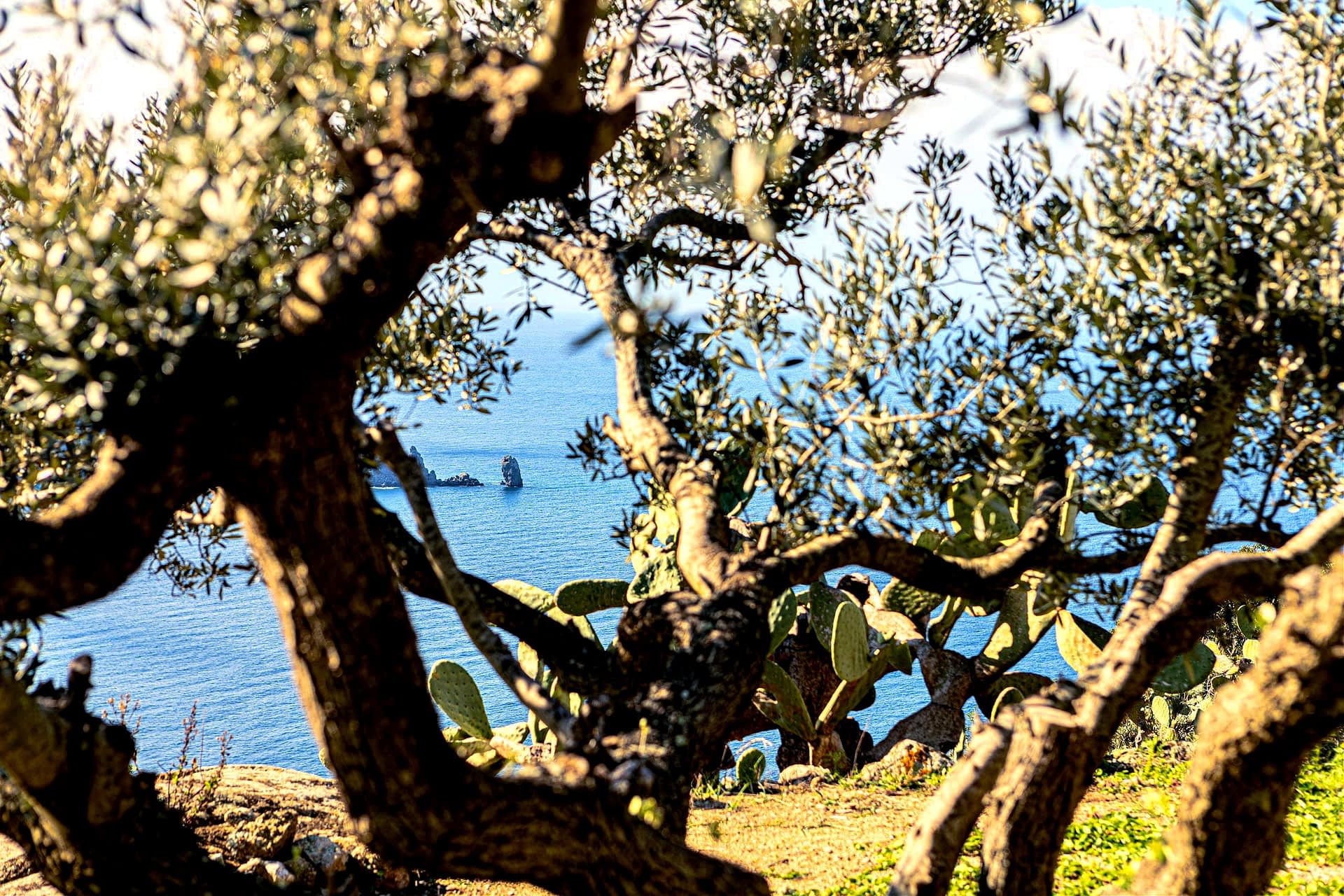
Stunning sea views turned Giglio from an agriculture-based to a tourism-based economy. (Photo by Federico Burgalassi)
Leccino is the most widespread variety in the orchard, and some ancient Nocellara del Belice trees can also be found – originally from Sicily, this variety was most likely brought by seafarers in past centuries and has taken root well.
The team now manages 750 trees and has planned field visits to evaluate the conditions of four new plots to take over in the coming weeks.
“The operations are not easy due to the steep slopes and irregularity of the terrain,” Bancalà said. “It is impossible to use vehicles, and the harvest is done by hand. Since some trees are even ten minutes walking distance from the main road where we park the van, carrying the bins full of olives can be quite strenuous.”
Last year, the fruits were crushed at the state-of-the-art Frantoio di Montalcino in the mainland province of Siena. After the harvest, the olives were loaded onto a ferry for a one-hour trip to Porto Santo Stefano. Once disembarked, they took a further journey by road of an hour and a half to reach the facility.
“Despite the difficulties, including the weather issues of the last few years, we maintained high-quality standards and achieved great results that repay all the efforts. Added to this is the awareness of the landscape and environmental value of our work,” Bancalà said.
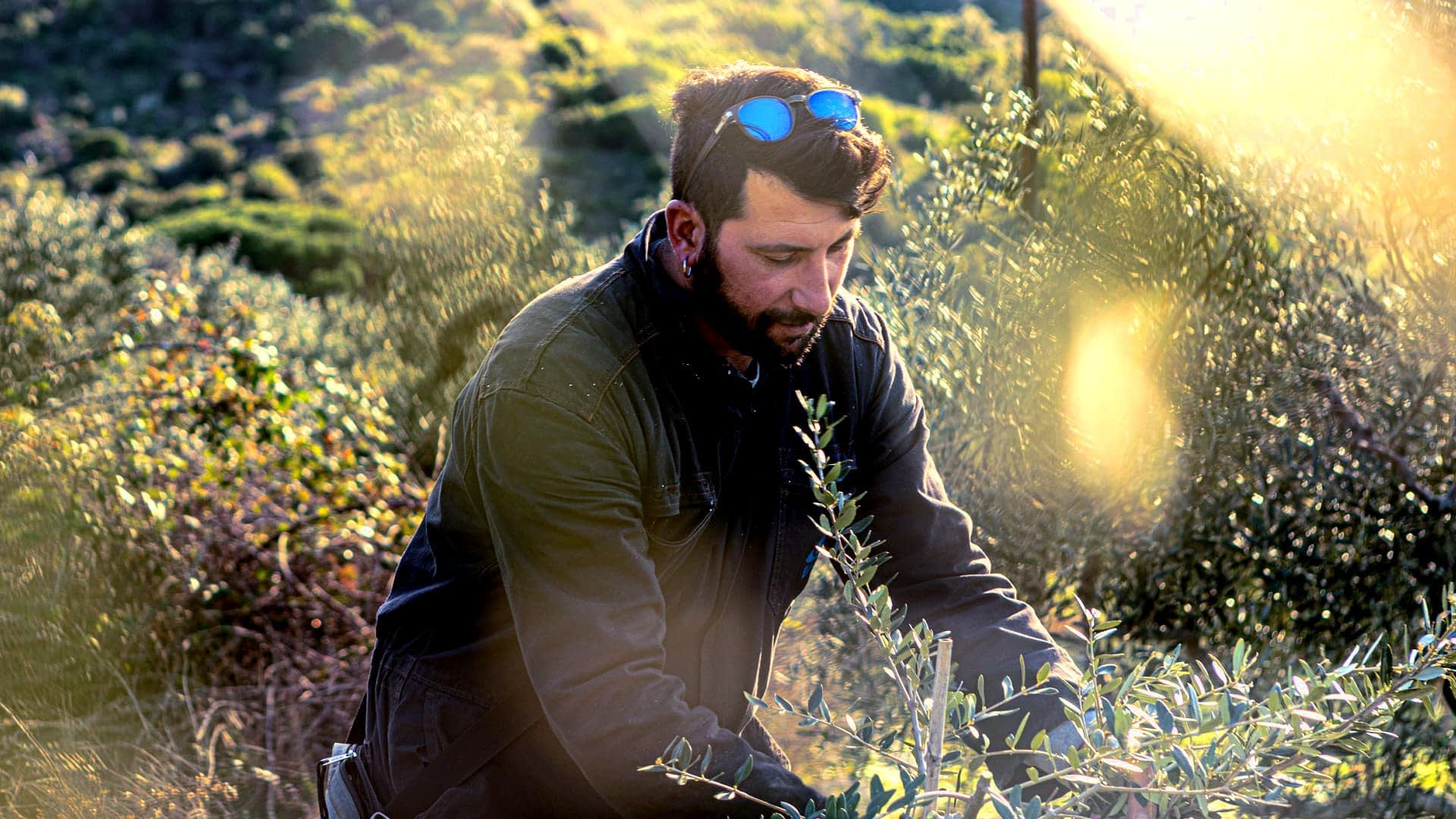
Francesco Bancalà tends to a newly-planted tree on the Tuscan island of Giglio. (Photo by Federico Burgalassi)
Capri is located roughly 200 nautical miles south, one of the five islands of the Campanian archipelago on the edge of the Gulf of Naples. With its 10 square kilometers, it has almost 14,000 inhabitants who live in two municipalities: the homonymous town of Capri in the east and Anacapri in the west.
“Our association was formed to protect the island’s olive groves,” said Carlo Alessandro Lelj Garolla, a landscaper agronomist and the coordinator of the association L’Oro di Capri. “This safeguarding action further benefits those who participate in the production of high-quality extra virgin olive oil.”
The project began in 2012 when Gianfranco D’Amato started renovating a plot of land and hired the company run by Pierluigi Della Femmina to restore some dry stone walls. Today, they are the association’s honorary president and president, respectively.
“One day, while walking in the restored plots at the end of the work and commenting on the great results of the restoration, we came up with the idea of recovering all the abandoned lands of the area and the olive trees growing on them,” Lelj said.

L’Oro di Capri’s team harvests recovered olive groves in Anacapri. (Photo: Giuseppe Rosato)
“We began by announcing the project to the community,” he added. “The initial skepticism quickly turned into a real commitment. Locals and regular visitors grasped the project’s importance and now actively support it.”
The olive tree and the vine were once staple crops in Anacapri. Villagers also used to grow vegetable crops, legumes and cereals to feed their animals. In the past centuries, when most of the island’s inhabitants were subsistence farmers, olive oil was used to barter for other goods and services.
“The economy of Anacapri has always been based on agriculture,” Lelj said. “The access to the sea is too perilous to guarantee safe and convenient fishing, and this has favored the rural work.”
Olive groves are widespread along the coast, from the Grotta Azzura (widely known as the Blue Grotto) in the northwest to the lighthouse in the southwest, at an altitude between 30 and 200 meters above sea level.
As tourism boomed in the mid-1960s, many islanders dedicated themselves to tourist activities flourishing in the east of the island, resulting in a lack of generational turnover in agriculture.

Efforts are underway on Capri to reinvigorate the island’s historic olive oil industry. (Photo: Umberto D’Aniello)
“So far, we have succeeded in recovering about 30 hectares of groves, and we usually manage to restore one or two hectares every year,” Lelj said, specifying that they not only clean up the land, prune the trees and maintain the terraces but also plant new olive trees.
“We added approximately 700 trees to replenish the sparser orchards,” he said. “We have chosen the varieties indicated by the product specification of the Penisola Sorrentina PDO, whose production area comprises the territory of Capri, namely Minucciola, typical of the island, along with Rotondella, Frantoio and Leccino.”
lmost all the recovered olive trees are centuries old. Currently, the Italian National Research Council (CNR) is carrying out a project for the identification of these ancient trees. The newly published study revealed that some of them has a unique genetic identity now in the process of being catalogued.
“After consulting with Angelo Loconte, who helped us to produce a premium product, we decided to press the fruits at Fattoria Ambrosio, a state-of-the-art mill in Cilento,” Lelj said. “Then, at the end of the harvest day, we bring the olives by ferry to the mainland, and they are crushed in a matter of hours.”

Olive groves recovered by the association L’Oro di Capri in Anacapri. (Photo: Umberto D’Aniello)
Today, the association has 50 members who protect the landscape and produce olive oil for their consumption. Eight of these growers have created brands being distributed on the market.
Several projects are underway with a particular focus on children and teenagers. Among these is the collaboration with the municipality of Anacapri to give families with children weaning a supply of extra virgin olive oil.
“We are constantly working with schools to promote environmental education and quality awareness,” Lelj said. “We take the kids to pick olives during harvest and visit the orchards throughout the year. We also planted olive trees with them. Moreover, we organize olive oil tasting workshops with the catering school students.”
Furthermore, the association participates in the European Union’s Erasmus Program through the comprehensive school of Anacapri with other European minor islands. The participants visit the olive groves and attend the activities organized by the association.
“Olive oil production underlies a large-scale project that includes several actions, from the education in respect for the environment to the promotion of healthy lifestyles,” Lelj said. “Indeed, L’Oro di Capri created a bond that unites the production of high-quality extra virgin olive oil with the safeguarding of the region and the active participation of the community.”


